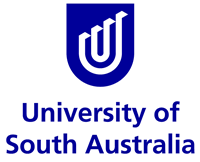About the Project
Applications are invited to undertake a PhD/Higher Degree by Research (HDR) to investigate how the inflammatory response to a traumatic brain injury differs in the paediatric population compared to adults. Paediatric head injury is a leading cause of death and disability in children, with those aged 0-4 having worse long-term outcomes due to disruption of normal brain development. Importantly brain tissue loss not only occurs immediately post-injury, but is ongoing, driven by activation of the immune system permitting influx of water and resultant brain swelling. Given the delayed nature, this provides an opportunity for pharmacological intervention. To improve outcome, we need to predict children most likely to develop dangerous brain swelling, and validate new therapeutic targets based on the specific inflammatory signature seen in children following head injury.
This project will use our well-characterised pre-clinical large animal model of traumatic brain injury, with evaluation of the inflammatory response within cerebral microdialysate, cerebrospinal fluid and serum. This will be matched with ongoing physiological monitoring of intracranial pressure and brain oxygenation to determine which inflammatory markers are predictive of development of brain oedema. Neuroimaging (DTI, MRI) will be used to examine levels of cerebral oedema and the development of axonal injury.
The project will be under the supervision of Dr Frances Corrigan within the Head Injury laboratory at the University of South Australia with co-supervision from A/Prof Renee Turner at the University of Adelaide who run the only large animal facility in Australia.
Students will possess an undergraduate degree with Honours or Masters (first class, or anticipation of 1st class Honours in 2019) in Biomedical Science, Health Sciences or equivalent degree. Interested students must be eligible for enrollment in a PhD program at University of South Australia and eligible to apply for an Australian Postgraduate Award or equivalent. The project is fully funded, but students are required to secure their own scholarship to cover living expenses. Potential applicants will be assisted in applying for scholarship funding.
More information about the background of the project:
Research suggests that children respond differently to head injury than adults. This can be seen by differences in the molecular response to injury with Semple et al (J Comp Neurol. 2019 Apr 15;527(6)) finding that juvenile mice had a much earlier (2hr vs 3D) peak in activation of resident immune cells (microglia) in response to injury than adult mice. This may relate to baseline physiological differences, with children having higher numbers of circulating immune cells (Perry et al; Neuroscience, 1985 15(2)) permitting a more rapid inflammatory response to the mechanical insult of a head injury. Of note this inflammatory response also appears to have greater deleterious effects in children, causing greater breakdown of the blood-brain barrier (the protective barrier between brain and periphery) (Anthony et al Brain, 1997 (120)). This breakdown allows influx of peripheral proteins and resultant influx of water leading to brain swelling. As the brain is housed within the rigid confines of the skull, influx of water increases pressure within the skull (intracranial pressure or ICP). This causes further injury by allowing brain herniation, where parts of the brain compress and damage other areas of the brain, as well as compressing blood vessels reducing blood flow to the brain and starving oxygen-hungry neurons, worsening functional deficits (Mayer et al, J Stroke Cerebrovasc Dis. 1999 May-Jun;8(3)). Indeed, high ICP following paediatric head injury is strongly associated with morbidity (Young et al PLoS One. 2016 Mar 15;11(3)). Given the key differences between the physiology of children compared to adults it is integral to examine how the inflammatory response to injury differs in the two populations. This will allow identification of treatments specific for the paediatric population, and improve long-term outlook after a head injury by reducing brain swelling. The unique susceptibility of very young children to poor long-term social, emotional, and cognitive sequelae after severe TBI, as well as the lifelong care and education-related costs (Shi et al Brain Inj. 2009;23(7)), suggest a need to improve acute care to this specific group of individuals acutely after TBI.
Funding Notes
Although the project is fully funded, students will be required to secure their own funding for their living costs, with support from the supervisors.

 Continue with Facebook
Continue with Facebook

